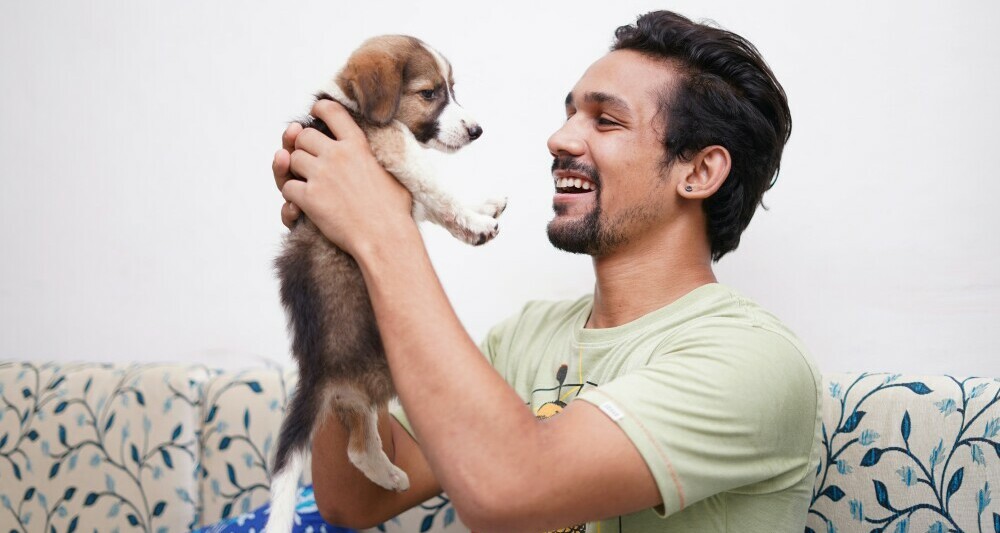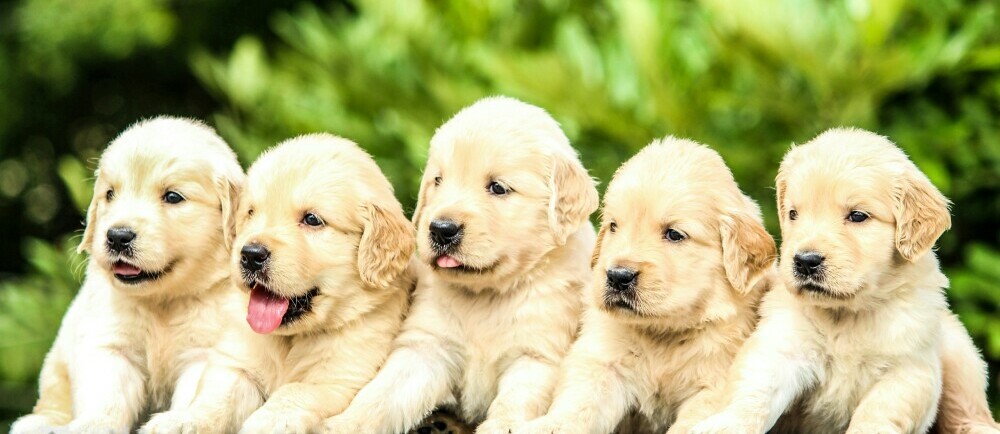I’m going to walk you through the very foundation of potty training your furry friend. This isn’t just about getting them to do their business outside, it’s also about setting a routine that your puppy can predict and feel secure with. Puppies, much like children, thrive on consistency. It helps them understand what’s expected of them, reducing anxiety and the likelihood of accidents.
Now what does a well-thought-out schedule include? Here’s the breakdown:
Feed your puppy, wait a bit, then take them outside. Sounds simple, right? Puppies typically can hold their bladder for about one hour for every month of age. So, if your puppy is three months old, they’ll likely need a break every three hours. But I suggest taking them out every two hours anyway, just to be safe, along with after waking up, playing, and post-eating.
And when you’re out there, use a specific word or phrase every time they relieve themselves. It could be something like ‘go potty‘ or ‘do your business.’ The idea is that this word or phrase will become associated with the action, making it easier to communicate what you’re expecting from your puppy.
Don’t forget the power of a reward system. A treat or enthusiastic praise right after your puppy finishes up reinforces good behaviour better than any scolding could. Remember, timing is everything – reward them outside, right after they’ve done the deed. You want them to make that positive connection, i.e. going outside equals happy times.
This routine lays the groundwork for a well-trained pup, and it’s something you’re going to want to keep consistent. So now you understand the daytime aspect of potty training. But what about the night? Night-time can be tricky, and that’s going to include a slightly different approach, which I’ll talk about in the next section, focusing on a bedtime routine that aligns with your daytime efforts.
Night-time Strategies for Potty Training
Now, let’s talk about getting through the night. This is crucial because a good night’s rest is essential for both you and your puppy. Here’s the deal – you need to set the stage for night-time success if you want to keep those midnight strolls to a minimum.
First, think about the last drink of water for the evening. I recommend removing the water dish two and a half hours before bedtime. This helps to reduce the chances that your little furry friend will need to go in the middle of the night. And trust me, your sleep schedule will thank you.
It’s a good sign if your puppy can sleep for about seven hours without a potty break. Just as babies need to develop bladder control, so do puppies. But remember, they’re all different – some may need to go out sooner. If your puppy does wake up in the night, don’t make a fuss. Keep it business-like. A quick trip outside, a calm ‘good boy’ or ‘good girl’ for doing their business, and then it’s straight back to bed.
The key here is routine. If you’re consistent with your late-evening and morning rituals, your puppy will quickly catch on. And while we’re on the subject of catching on, in the next section, I’m going to cover how you can keep an eagle eye on your puppy to prevent indoor accidents before they happen. Spoiler alert: it’s about knowing the signs and acting quickly.
Supervising Your Puppy to Encourage Good Habits
I’m here to help you with a crucial aspect of potty training your puppy – supervision. Now, I’m not just talking about watching your fluffy friend chase their tail. Keeping a close eye on your canine companion is key to catching those tell-tale signs that they need to go.
You’re going to find out about the critical role that supervision plays in the potty training process. Here’s the thing – puppies have tell-tale signs before they need to relieve themselves. These can include behaviours like barking, scratching at the door, squatting, or even getting that distant look in their eyes. Recognizing and responding to these cues promptly gets your pup used to the idea that outside is the place for bathroom breaks.

Choose something that resonates with you for supervision techniques. Some folks like to keep their puppy on a leash tied to their belt, while others may use baby gates to limit their furry charge to a certain room. Either way, the goal is to prevent those stealthy squat-and-pees when you’re not looking.
In my opinion, supervision goes beyond mere potty training — it’s also about forming a bond. You’re setting up your pup for success in more ways than one by offering them attention, guidance, and safety. And remember, if you need to step away and can’t keep an eye on your puppy, that doesn’t mean the training stops. That’s where the next step comes in – effective confinement.
Effective Confinement: Balancing Safety and Training
I’m going to talk about an essential element of potty training your puppy that often gets overlooked – confinement. Now, this isn’t just about keeping your puppy out of trouble – it’s also about creating a safe environment that promotes potty training success.
So, you might be wondering when and how to use cage or confined spaces, right? Well, these are great tools to prevent accidents when you can’t supervise your puppy. But, and this is a big BUT, it must be done humanely. That means ensuring the space is comfortable, not too small, and that it’s associated with positive experiences, not punishment.
Next, let’s chat about setting up a puppy-safe area for those times you can’t keep a watchful eye. Use a cage or a section of your home with easy-to-clean floors. Pop in their favourite chew toys and a soft bed for a touch of comfort. This is also the perfect spot for bathroom breaks if they can’t hold it until you’re back.
Finally, I’m here to help you understand the importance of responding to accidents properly. Suppose your puppy has an accident in the house. In that case, don’t actually ‘suppose it,’ expect it to happen because it will, let’s clean it up thoroughly and move on. I can’t stress enough – avoid rubbing their nose in it or scolding them. That can lead to fear and confusion, which might actually slow down the training process.
Stay tuned, as we’re going to smoothly transition into creating long-term potty training success. It’s all about planning for when you’re not around and establishing that ever-important designated elimination area. Keep these things in mind, and you’re setting both yourself and your puppy up for success.
Creating Long-Term Potty Training Success
You’ve made it this far in your puppy’s potty training journey, and you’re doing fantastic. But remember, the aim isn’t just to manage for a few weeks or months – it’s to set your puppy up for a lifetime of success.
If life’s commitments keep you away from home for longer periods, planning is key. If you’re going to be out for more than four or five hours, it makes sense to have someone pop in to take your puppy out. Puppies are social creatures, and they’ll appreciate the company as well as the bathroom break.
When considering your puppy’s potty schedule, think about the long-term arrangements. It’s worth keeping in mind that older, potty-trained dogs can be role models for your young pup. Having a consistent presence of a well-trained dog can significantly streamline your puppy’s learning process.
 Sometimes you’re not going to be able to follow the ideal plan, and that’s okay. Paper-training or pee-pads can be a practical tool. Just bear in mind that this could make the process a bit lengthier, as it adds an extra step for them to transfer their ‘bathroom’ outside.
Sometimes you’re not going to be able to follow the ideal plan, and that’s okay. Paper-training or pee-pads can be a practical tool. Just bear in mind that this could make the process a bit lengthier, as it adds an extra step for them to transfer their ‘bathroom’ outside.
Lastly, don’t forget about the importance of a designated elimination area. Whether it’s a special section of your garden or a specific spot with puppy pads, maintaining this area helps reinforce your puppy’s training. Using scent markers or continuing to take them to the same spot helps them remember the right place to go.
Keep up the great work, stay patient, and consistent, and you’ll see that your dedication will pay off with a well-trained, happy puppy. After all, this isn’t just about potty training – it’s about forming a trusting bond and setting the stage for your shared future.

